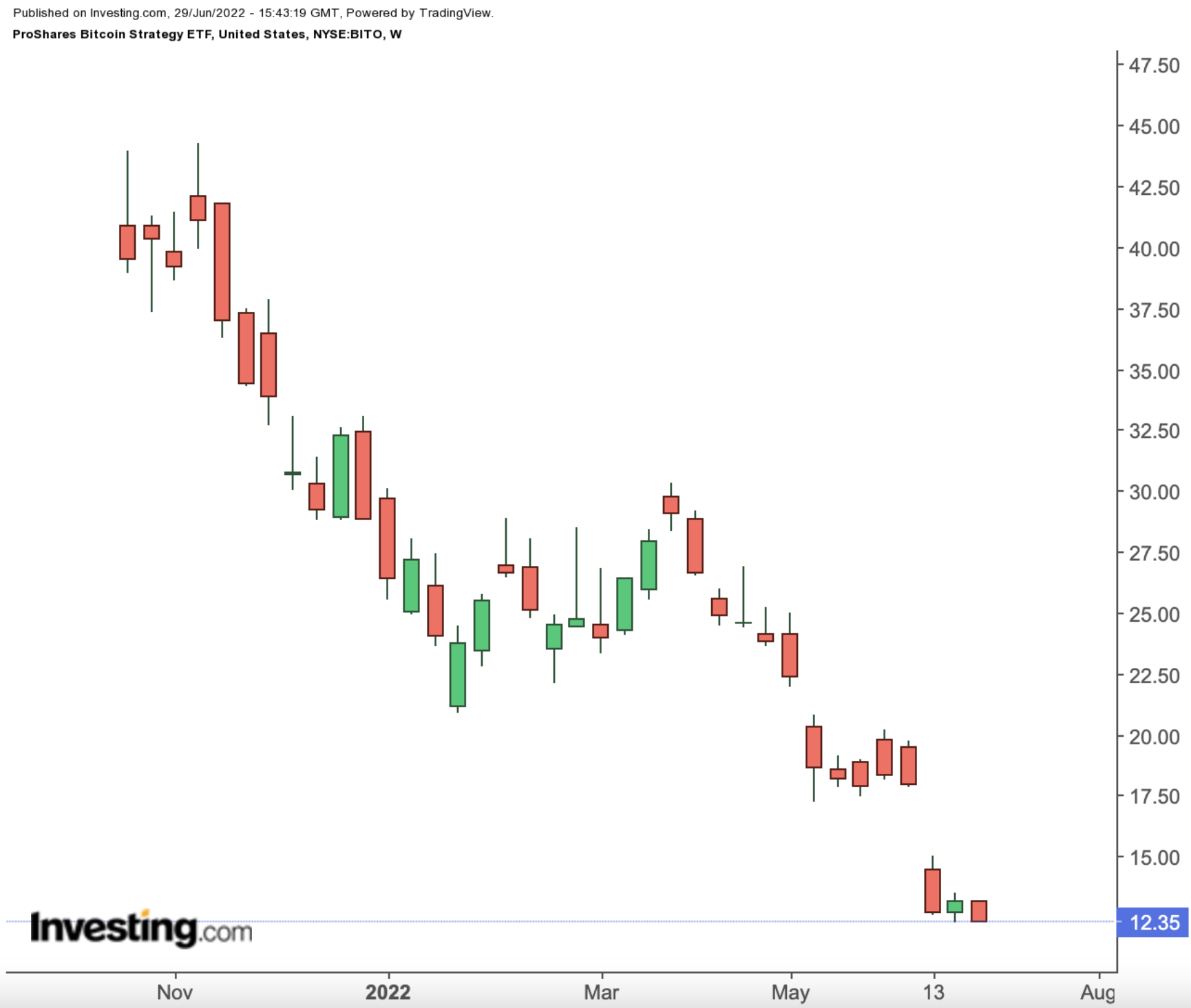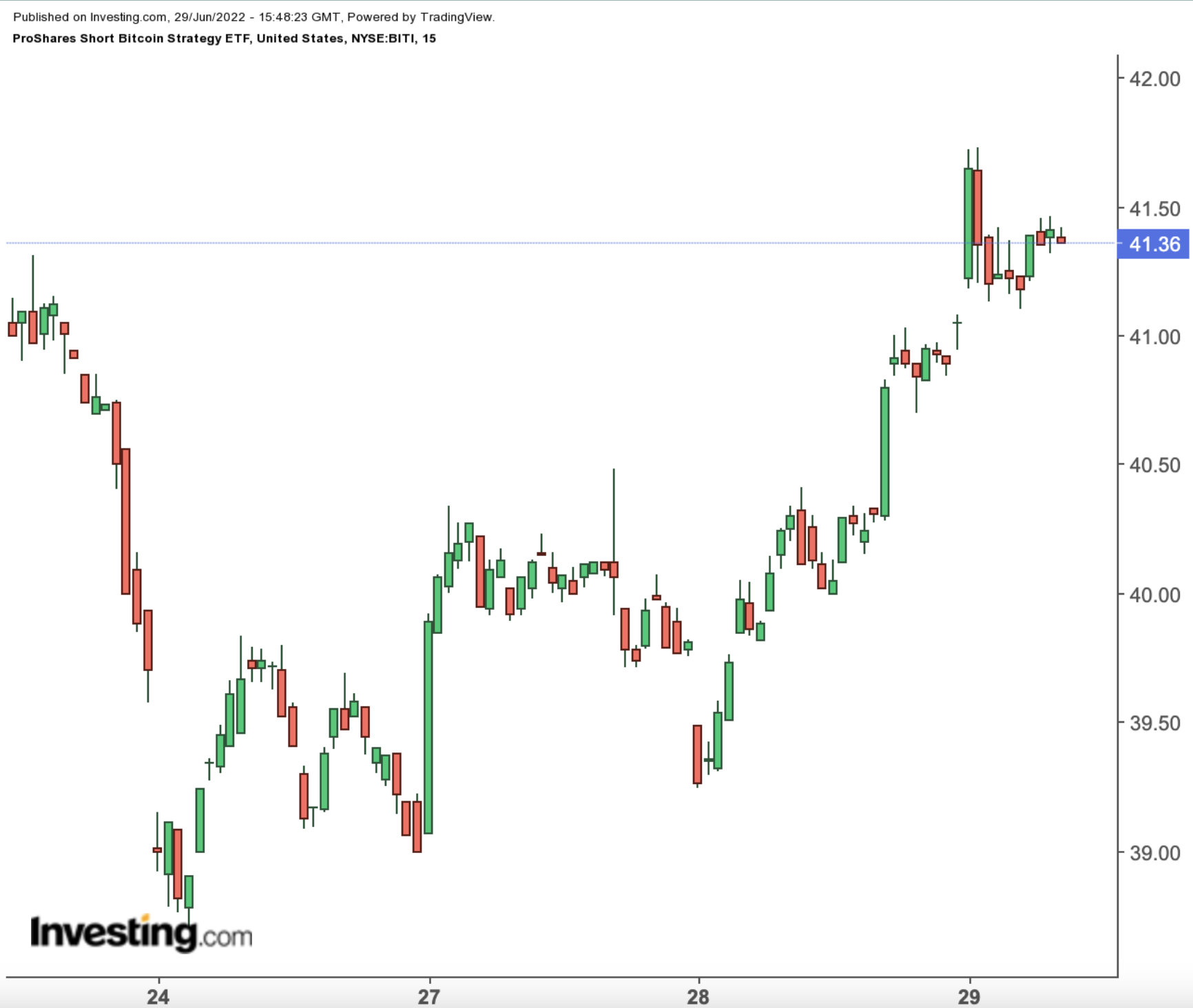Crypto exchange-traded funds (ETFs) make investing in the digital currency market relatively easy, sparing investors from the hassle and security risks of managing virtual wallets and keys.
However, such funds may also present considerable disadvantages. According to SEC regulations, the crypto ETFs currently available in the market cannot invest directly in spot cryptocurrencies. Instead, they allow individuals to invest in cryptocurrency futures contracts or businesses holding cryptocurrency assets.
The global cryptocurrency market, which skyrocketed to almost $3 trillion in November 2021, has since plunged to less than $1 billion. The combination of risk-off sentiment and several crypto exchanges halting withdrawals led Bitcoin's price to decline to below $20,000. The digital currency has lost over half its value year-to-date (YTD).
Meanwhile, among the worst-performing, non-leveraged ETFs so far this year are all crypto and digital asset-linked funds. For example, the Valkyrie Bitcoin Strategy ETF (NASDAQ:BTF) and the Global X Blockchain & Bitcoin Strategy ETF (NASDAQ:BITS) have declined around 56.9% and 66.5%, respectively YTD.
Yet, the crypto crash has also created a buying opportunity in some of the hottest digital assets and funds that give access to them. However, many analysts suggest it could take months for the crypto market to recover from these declines.
Against this backdrop, we introduce two ETFs by ProFunds that offer exposure to both crypto bulls and crypto bears.
ProShares Bitcoin Strategy ETF
- Current Price: $12.35
- Expense Ratio: 0.95% per year
The ProShares Bitcoin Strategy ETF (NYSE:BITO) started trading on Oct. 19, 2021, at an opening price of $40.88. It became the first crypto ETF in the U.S. to offer exposure to Bitcoin returns. Within the past few months, other similar ETFs have debuted stateside.

Rather than directly investing in Bitcoin, BITO tracks the performance of near-dated Bitcoin futures contracts. As many of our readers know, the performance of Bitcoin futures does not exactly reflect the spot price of Bitcoin.
Futures markets usually trade "in contango," where the futures price of a given asset is higher than the spot price. These futures funds have to roll the forward contracts regularly, usually monthly. Therefore, BITO shares carry roll yield risk.
Since its inception, BITO has plunged around 70% to $12.3 territory, currently trading around its all-time low. The fund is also down 57% YTD.
BITO, and its peers, may not be appropriate for most investors as an asset class due to its high volatility. Nevertheless, BITO has made Bitcoin more accessible for long-term investors as they can invest in the crypto conveniently through their brokerage accounts. BITO currently boasts around $651 million in assets under management.
Bitcoin and BITO currently seem to trade in correlation with the stock market. However, amidst macroeconomic headwinds, a further decline could be in the cards for the cryptocurrency market, which has bearish implications for BITO shares.
2. ProShares Short Bitcoin Strategy ETF
- Current price: $41.30
- Expense Ratio: 0.95% per year
ProShares is now offering ETFs for both sides of Bitcoin. At this point, it is not easy for retail investors to short spot Bitcoin on cryptocurrency exchanges.
The ProShares Short Bitcoin Strategy ETF (NYSE:BITI) addresses this challenge by helping investors gain short exposure to bitcoin via bitcoin futures contracts. BITI is designed to profit from price declines in the cryptocurrency, delivering the inverse (or -1x) of the daily performance of the CME Bitcoin Futures Index. Like many other inverse ETFs we have covered in the past, BITI is more appropriate for short-term bets against the price of Bitcoin.

This inverse fund was recently launched on June 21. BITI started trading at $38.51. The ETF was trading more than 870,000 shares, or $35 million of value, on its second day of trading. The interest in the fund highlights the fragile state of the digital currency market now.
BITI could particularly appeal to short-term crypto bears or those wishing to hedge their current crypto holdings. Due to the compounding of daily returns, longer holding periods will likely result in significantly different returns than the target return.
